Tubing and Hose
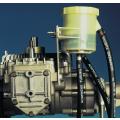
Norprene® Industrial Grade Tubing
Norprene® A-60-G Tubing outperforms neoprene, EPDM and other general-purpose tubings, it will not weaken or crack after years of exposure to heat and ozone, providing for long service life. Performance formulated for on-the-job reliability, Norprene® handles temperatures from -75°F to 275°F, and excellent resistance to inorganic (acids and bases) fluids.
• Superior weathering and temperature resistance
• Abrasion and fatigue resistance
• Low gas permeability compared to rubber tubing
• Ozone and UV light resistant
• Compound hardness rating 61, Shore “A”
• Max. recommended operating temperature: 275°F
• Low temperature flexibility: -75°F
Typical Applications
• Soap and disinfectant dispensing
• Plating and etching chemical
• Glass and window washing equipment
• Wastewater sampling
• Printing ink transfer
Priced by the foot, sold in coil lengths only.
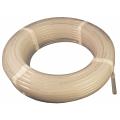
Polypropylene is a tough, heat-resistant tubing, ideal for the transfer of hot liquids or gases. It is recommended for vacuum systems and applications where higher temperatures and pressures are encountered. It has excellent resistance to acids and alkalies., but poor resistance to aromatic, aliphatic and chlorinated solvents. Raw materials used in its manufacture meet requirements set by the FDA. The natural color of the tubing is semi-opaque white. Not recommended for use outdoors, or for exposure to UV light.
Sold by the coil.
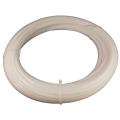
Teflon® PTFE Tubing has superior chemical resistance and is extremely well suited for use in laboratory, chemical, electrical, pharmaceutical and mechanical applications. Teflon® is chemically inert, non-toxic and virtually non-porous. Teflon® tubing is ideal for applications requiring low coefficient of friction which results in a slippery and non-clogging characteristic. Teflon® tubing may be sterilized by autoclave, ethylene oxide or dry heat.
Max Operating temperature 550°F and a low temperature limit of -400°F
Sold by the foot.
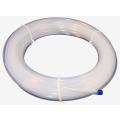
FEP is a fluoropolymer with excellent physical and chemical properties. It can withstand low cryogenic temperatures, and has low porosity and low permeation. Chemically inert at extreme temperatures, FEP can operate in temperatures ranging from -450°F to +400°F. FEP’s transparency and weatherability make it ideal for use in sight gauges, especially when used with harsh chemicals.
Sold by the foot.
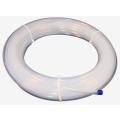
PFA’s stress-crack resistance, excellent electrical properties and temperatureresistant properties make it ideal for use in cable coating, valve and pump linings, and insulating bushings. PFA, which can operate in temperatures ranging from -320°F to + 500°F, is chemically inert and virtually non-porous. Used in any application with high heat and chemical requirements, PFA’s non-stick characteristics promote ease of movement of viscous, aggressive compounds, and prevent binding of proteins.
Sold by the foot.
